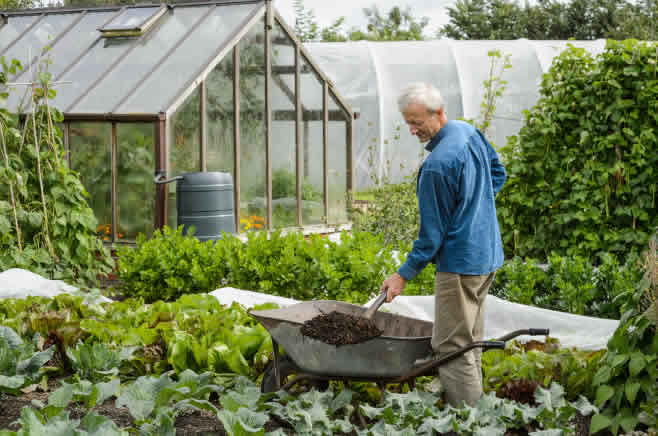Creating an Efficient Home Vegetable Garden: Low-Cost Strategies for High-Yield Planting
Gardening at home is more than just a hobby; it’s a practical way to reduce grocery bills while enjoying fresh, organic produce. By using smart, low-cost strategies, you can create an efficient home garden that delivers high yields without breaking the bank. This guide will explore actionable tips, backed by real examples and expert advice, to help you maximize your gardening efforts.

Seed Selection and Starting
Choosing the right seeds is the first step in ensuring a high-yield garden. Opt for open-pollinated and heirloom varieties, which can be harvested and replanted year after year, reducing the need to purchase new seeds annually. Here are some tips to consider:
- Buy in Bulk: Purchasing seeds in larger quantities can significantly reduce costs. For instance, a bulk pack of 500 carrot seeds might cost $3.00, compared to $2.50 for a packet of 50 seeds.
- Seed Swaps: Participate in local seed swaps or online communities where gardeners exchange seeds. This not only saves money but also introduces you to a variety of plants adapted to your local climate.
Planting and Growing
Efficient planting techniques are crucial to maximizing space and yields. Here are some strategies:
- Square Foot Gardening: This method allows you to grow more plants in less space. For example, in a 4×4 foot raised bed, you can grow 16 different plants. A pack of mixed vegetable seeds for this method costs around $10.
- Companion Planting: Some plants, when grown together, enhance each other’s growth. For instance, planting basil alongside tomatoes can improve flavor and repel pests.
Pest and Disease Management
Keeping your garden free of pests and diseases doesn’t have to involve expensive chemicals. Natural methods are often more effective and sustainable.
- Neem Oil: A natural pesticide that controls a variety of pests. A 16oz bottle costs around $15 and can be diluted to treat an entire season’s garden.
- Beneficial Insects: Introducing ladybugs or predatory nematodes can help control pests. A batch of 1,500 ladybugs costs about $10.
Harvesting and Storage
Knowing when and how to harvest your crops is essential for maximizing yield and extending the freshness of your produce.
- Succession Planting: By planting new seeds every few weeks, you can ensure a continuous harvest. For example, planting lettuce every three weeks can yield fresh greens all season.
- Proper Storage: Invest in proper storage solutions like a root cellar or canning equipment. A basic canning kit costs around $30 and can preserve your harvest for months.
Expert Tips and Recommendations
Here’s a table summarizing some of the best low-cost strategies for high-yield gardening:
| Tip | Benefit |
|---|---|
| Buy in Bulk | Reduces the cost per seed, saving money over time. |
| Seed Swaps | Access to a variety of seeds at no cost. |
| Square Foot Gardening | Maximizes space, allowing more plants in smaller areas. |
| Companion Planting | Enhances growth and pest resistance. |
| Neem Oil | A natural, cost-effective pesticide solution. |
| Beneficial Insects | Controls pests naturally, reducing the need for sprays. |
| Succession Planting | Ensures continuous harvests throughout the season. |
| Proper Storage | Extends the shelf life of produce, reducing waste. |
| Composting | Provides free, nutrient-rich fertilizer for plants. |
| Mulching | Conserves water and reduces weed growth. |
Frequently Asked Questions
Q: How can I make my garden more drought-resistant?
A: Using mulch and compost in your garden can help retain soil moisture, reducing the need for frequent watering. You can also select drought-resistant plants like tomatoes and peppers that thrive in drier conditions.
Q: What are some ways to save on water costs?
A: Collecting rainwater in barrels and using drip irrigation systems can significantly reduce water usage. A basic rain barrel costs around $70, and it can save you hundreds of gallons of water each year.
Q: How can I prevent pests without chemicals?
A: Planting pest-repellent herbs like marigolds and using physical barriers such as row covers are effective, chemical-free methods for pest control.
Case Study: High-Yield Gardening on a Budget
John, a gardener from California, transformed his small backyard into a highly productive garden using square foot gardening and companion planting. With an initial investment of $150, including seeds, compost, and basic tools, he grew over $600 worth of vegetables in one season. By composting kitchen scraps and using rainwater, he further reduced his gardening costs.
Visualizing Your Garden’s Success
Here’s a simple chart that illustrates the potential savings from home gardening:
| Item | Store-Bought Cost (Annual) | Home-Grown Cost (Annual) | Savings |
|---|---|---|---|
| Tomatoes (50 lbs) | $100 | $15 | $85 |
| Lettuce (30 heads) | $60 | $10 | $50 |
| Herbs (Basil, Parsley) | $30 | $5 | $25 |
| Total | $190 | $30 | $160 |
This table shows that with a small initial investment, you can save a significant amount of money over time by growing your own produce.
References
For further reading and to verify the strategies mentioned, consider the following sources:
- https://www.almanac.com/content/seed-starting-guide
- https://www.gardeningknowhow.com/garden-how-to/projects/square-foot-gardening.htm
- https://www.thespruce.com/companion-planting-guide-1403129
By implementing these low-cost, high-yield gardening strategies, you can enjoy the benefits of fresh, home-grown produce without the high price tag. Happy gardening!







Recent Comments